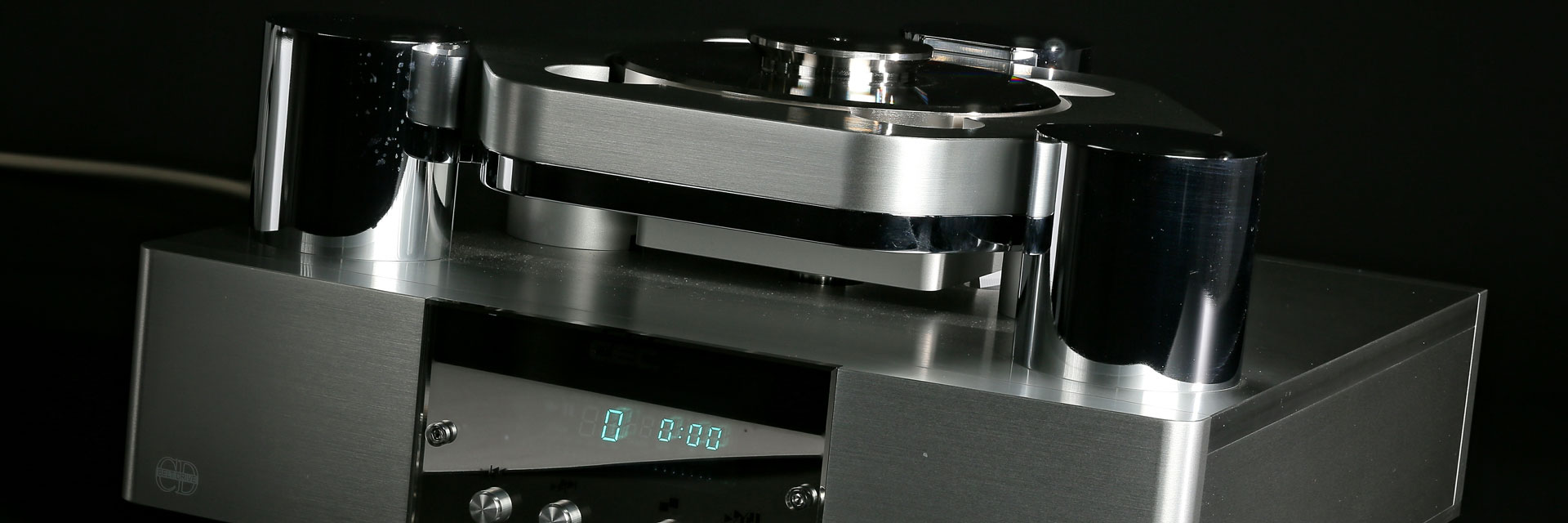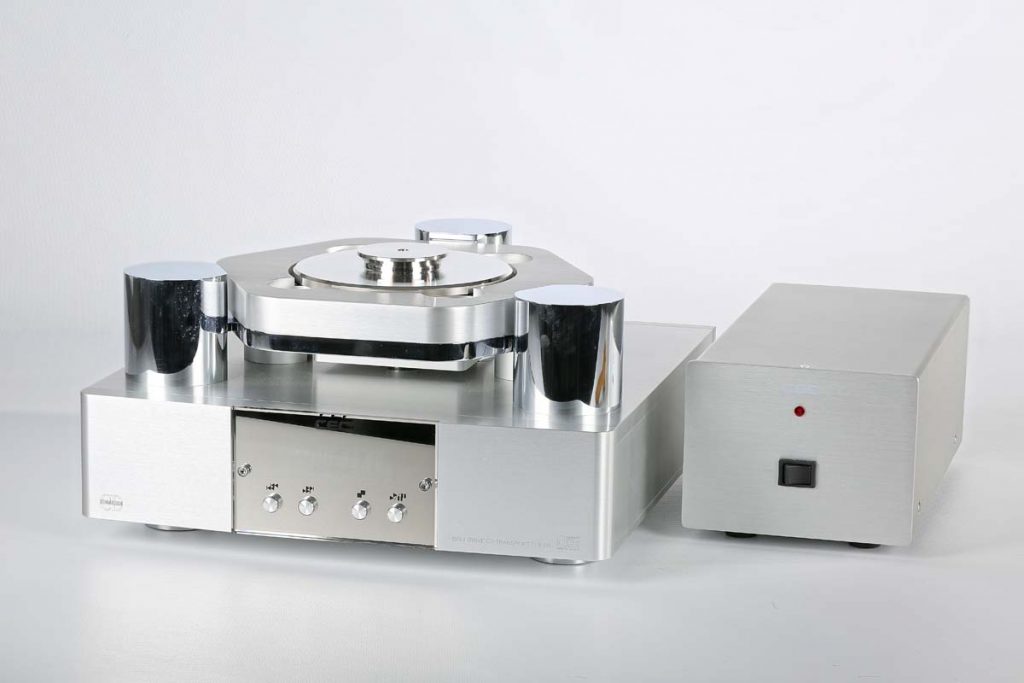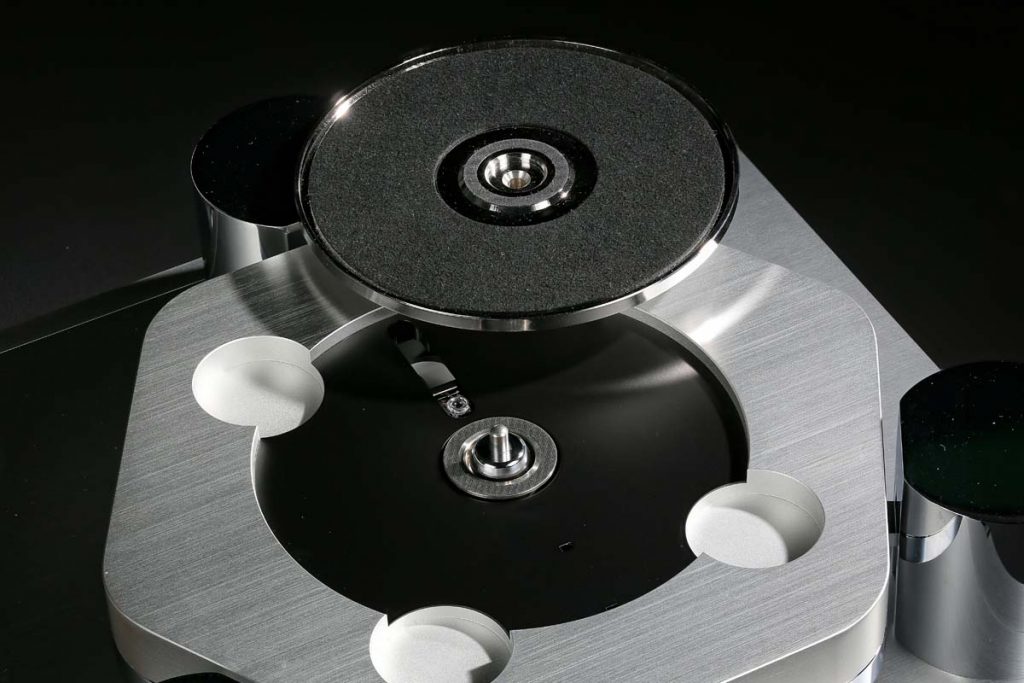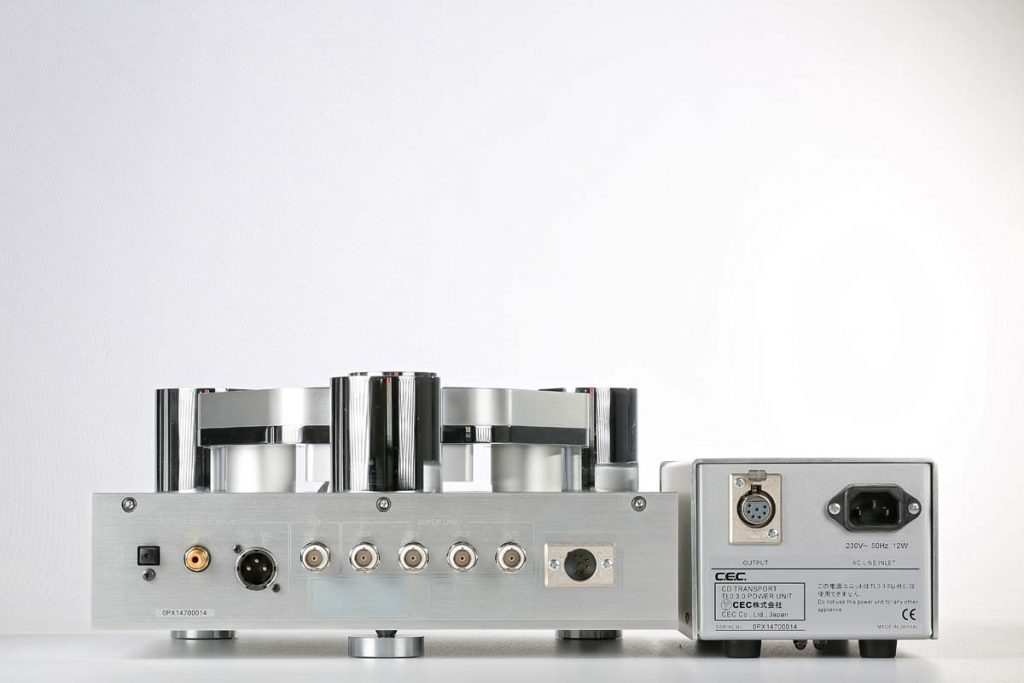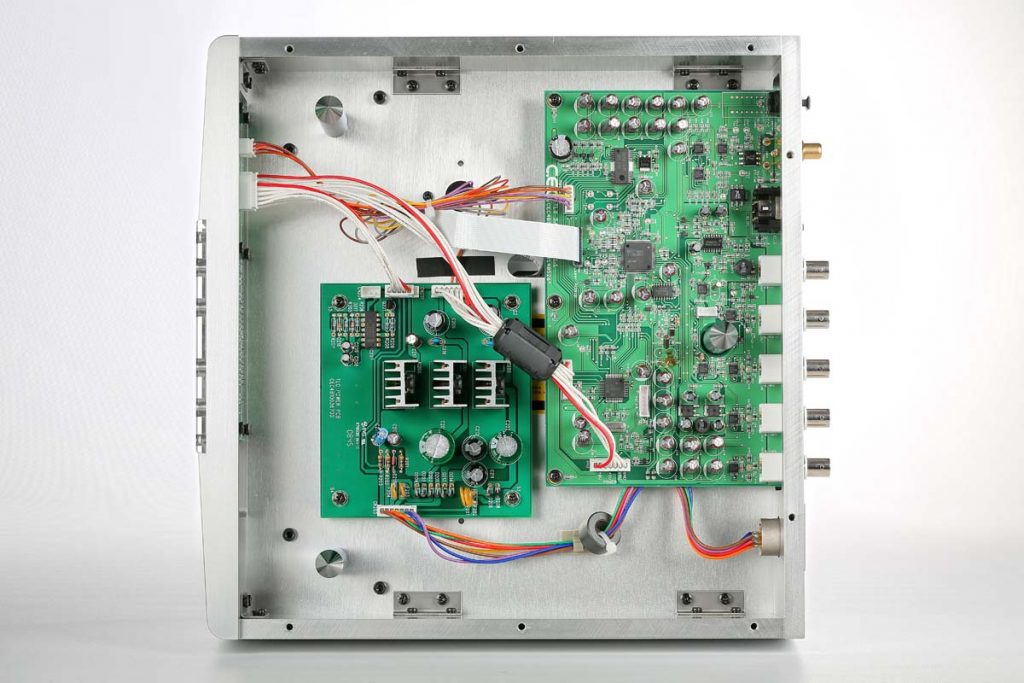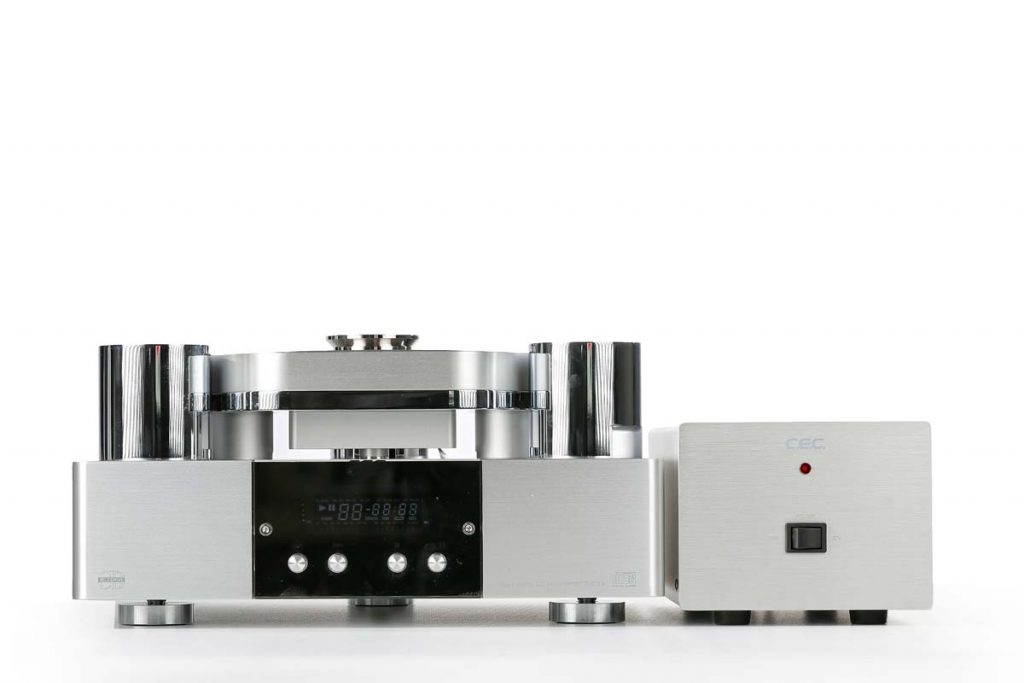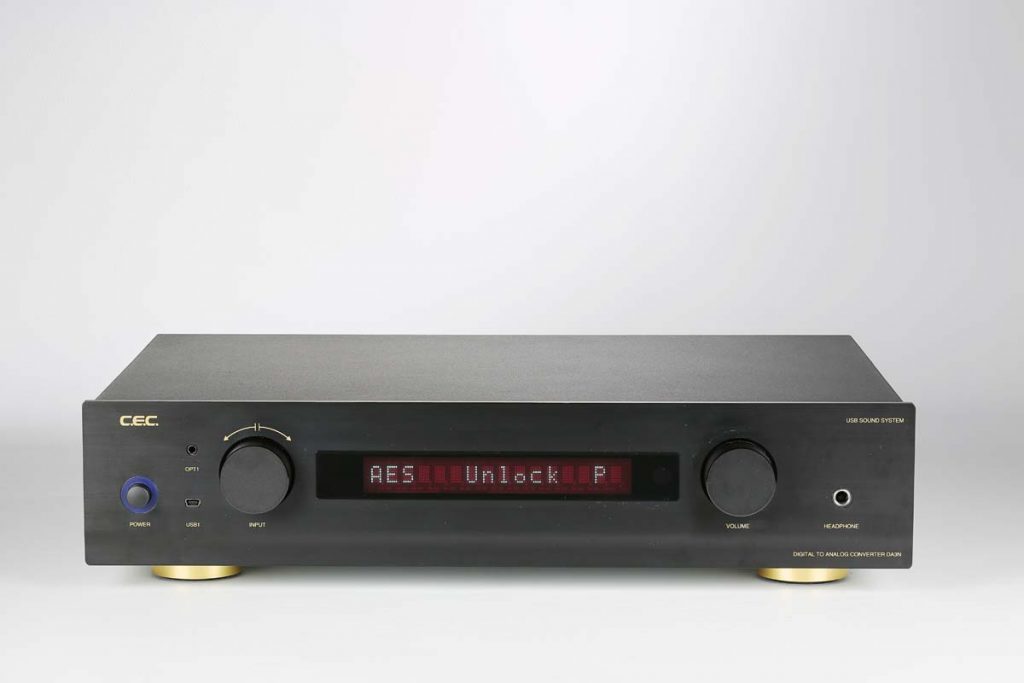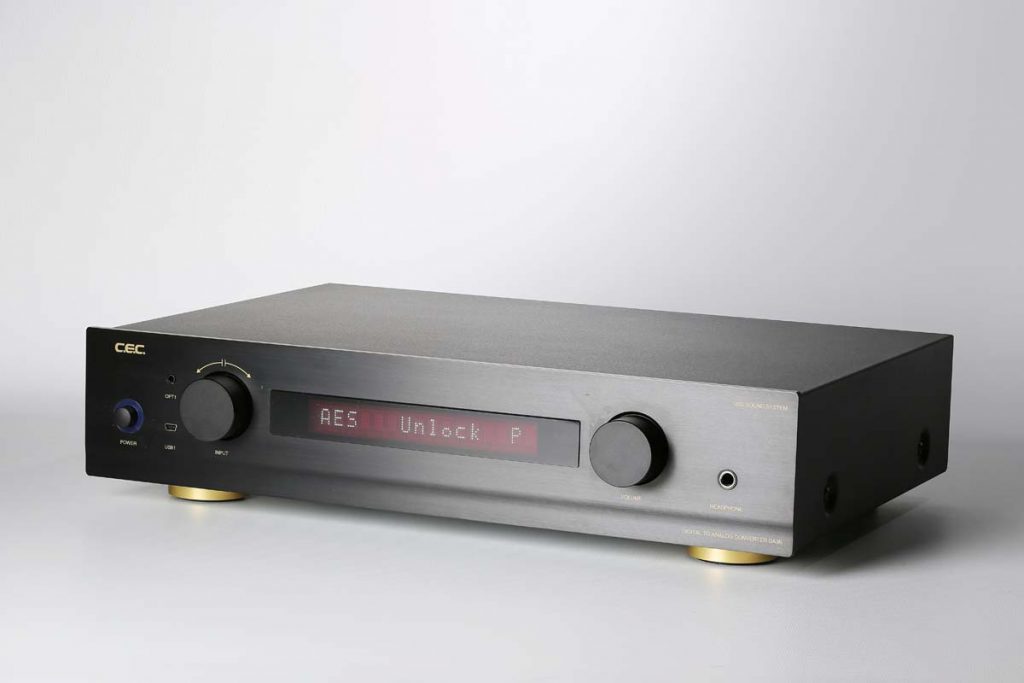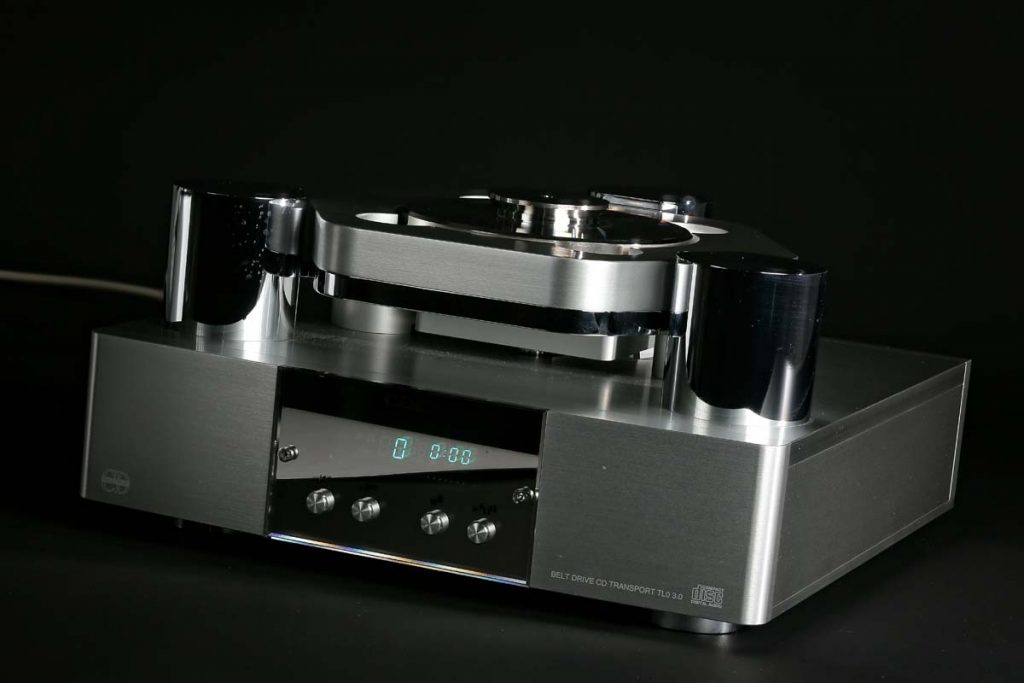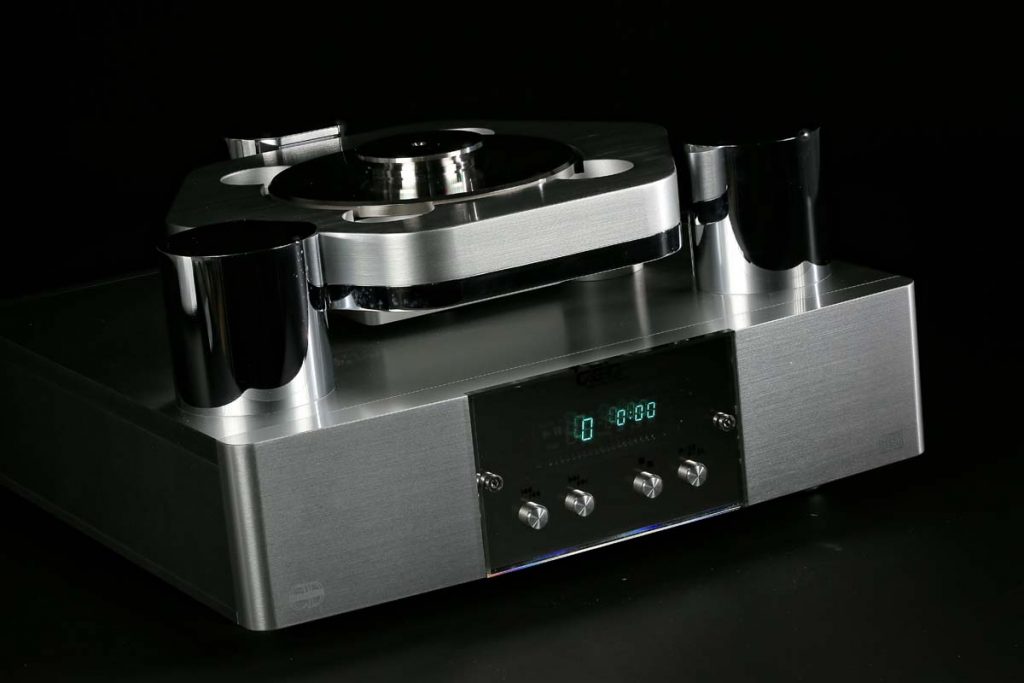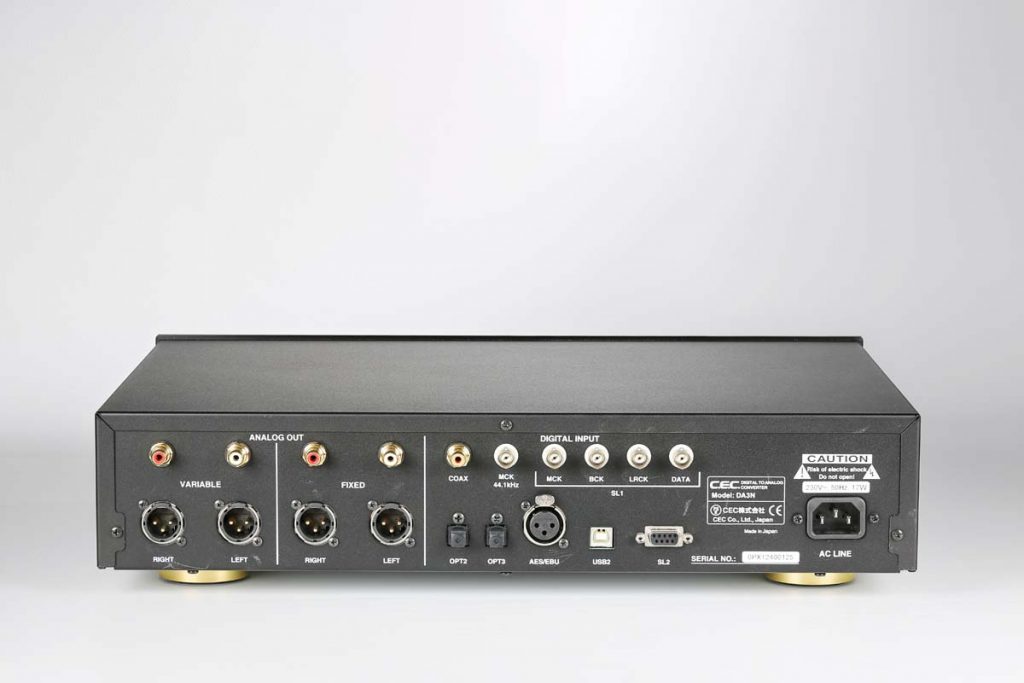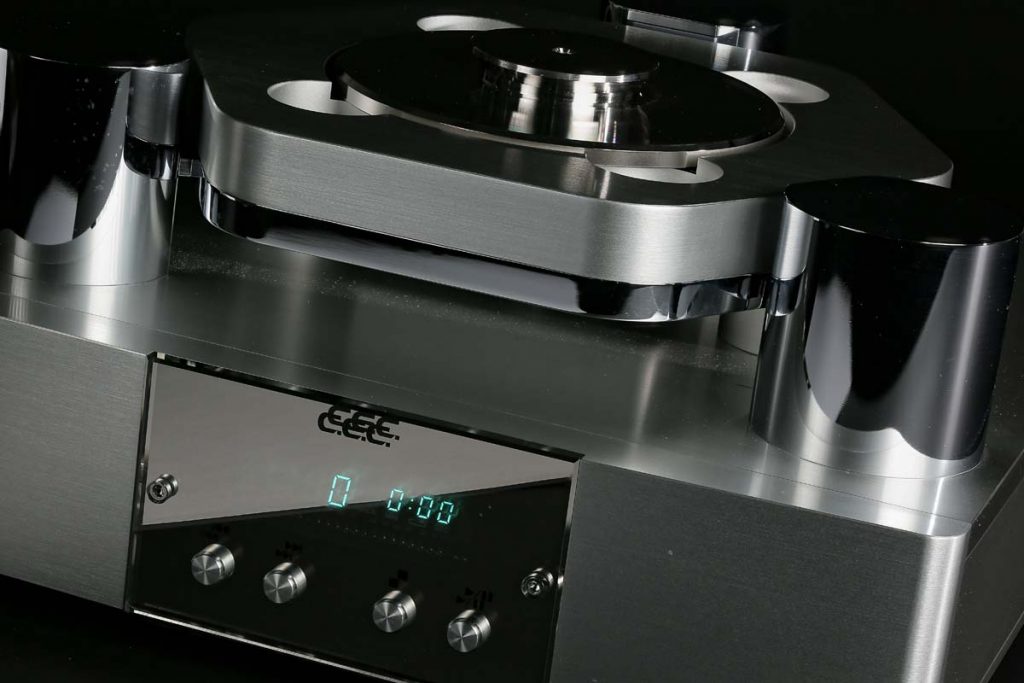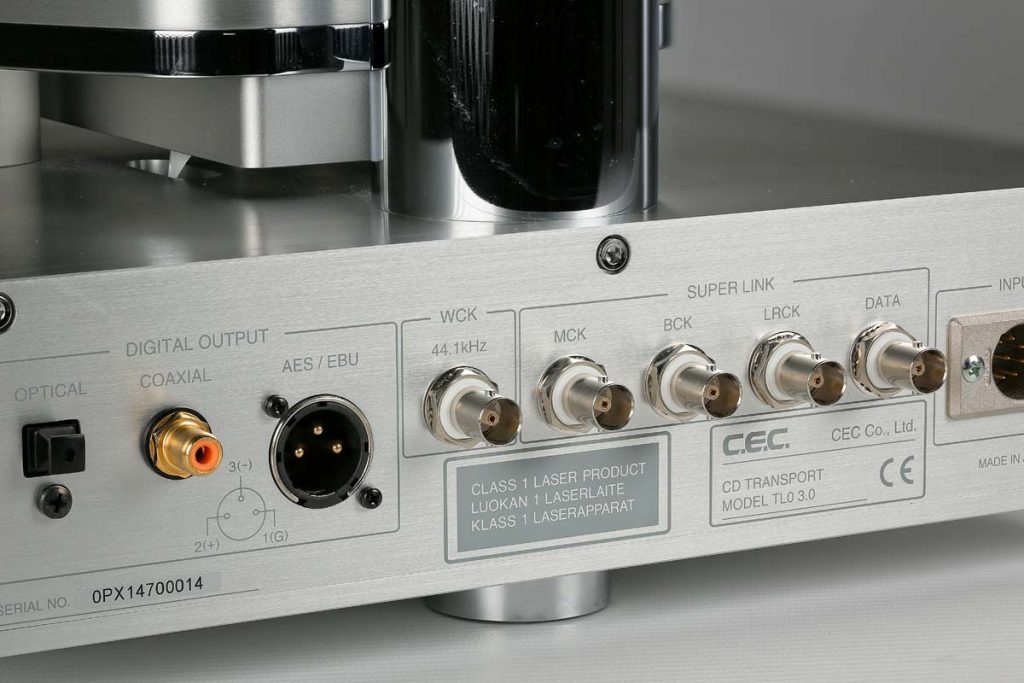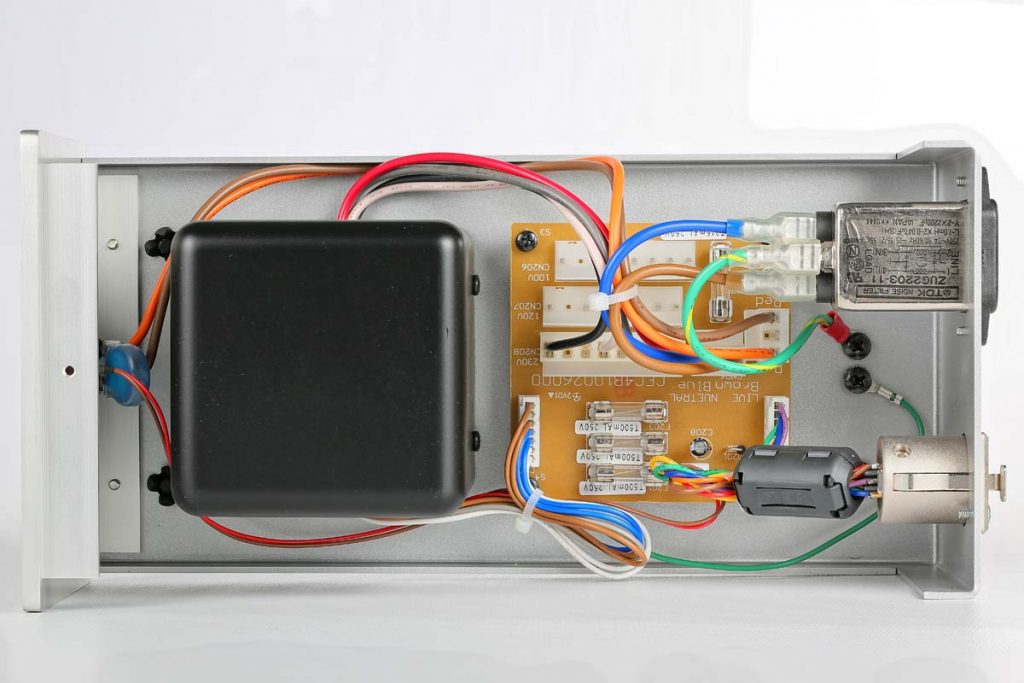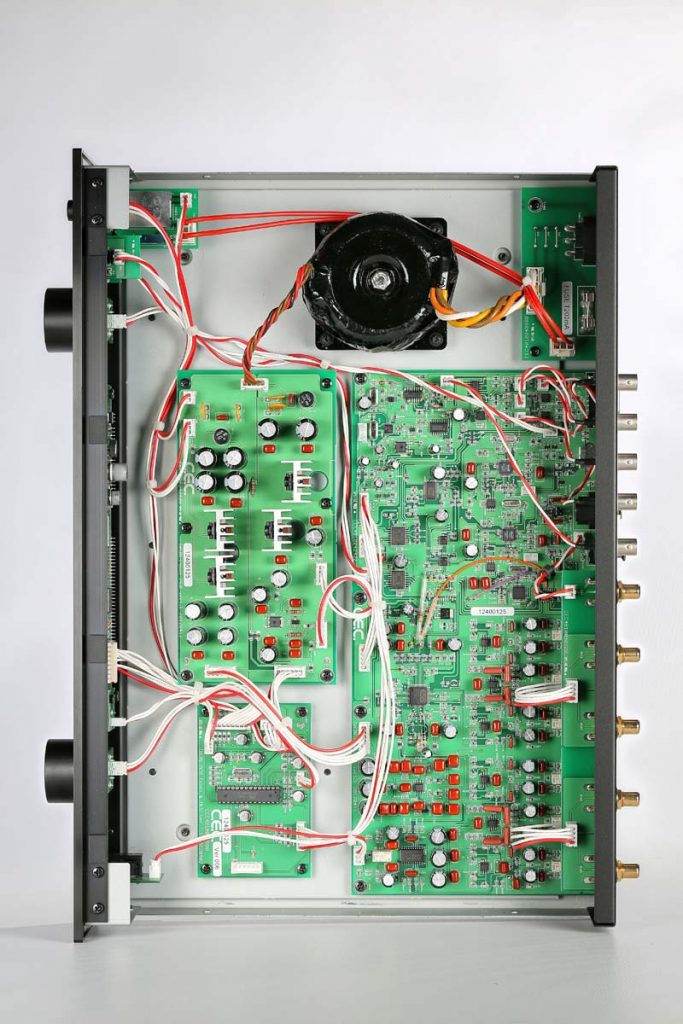The Eternal Disc Spinner
There are billions and billions of CDs out there. It’s worth getting standout digital equipment from Japan to play the best, finest and most valuable of them – like the CEC TL0 3.0.
What do you want from a turntable? As stable a drive as possible, as little resonance as possible, and as uninterrupted a pick-up process as possible. Then the resulting music will be great. What do you want from a CD player? Exactly the same things, according to CEC, who, for almost a quarter of a century, has been building CD players with astonishing similarities to large analog machines, even in terms of sound.
CEC’s top-of-the range model pushes everything to the max in analog technology terms, so much so that it completely blurs the lines with the best record players—and yes, even in terms of the sound. The price does, however hover up in the stratosphere where you only find analog heavyweights floating around. The TL0 3.0 weighs in at just under 20 kilograms (with the external power unit), meaning that each kilo will set you back €1,500. That’s a total of just under €30,000—enough to make the “sensible” among us despair: penny-pinchers will complain because the expensive device can only read zeros and ones of audio CDs and nothing else. Digital haters will look down their noses because it champions the technology of yesterday (CDs), which had almost replaced the beloved technology of yesteryear (vinyl). And trend scouts simply won’t understand why anyone in their right mind would still spend their money on a machine that plays physical recorded music media. Who listens to CDs these days anyway?
Well, a hell of a lot of music lovers, actually. I do, for one. Admittedly, the price does take even my breath away. There’s no getting away from the fact that audiophile know-how and top engineering exact their price — and in this case, it all adds up. CEC has been right at home in both camps (digital and analog) for decades already. Founded in Tokyo in 1954, the company unveiled the first belt drive for record players that the same year. It experienced rapid growth selling its own products but also made a name for itself as a supplier for numerous renowned audio companies. When the CD format made its debut in 1983, production of CD players was already running at full tilt. In 1991, CEC surprised disillusioned CD listeners (indeed, “digital” did not inevitably mean “perfect”) with their old-school realization that belt drives and subchassis were also good for digital players when they unveiled the TL1 model, the “world’s first belt drive CD transport.” Burmester also laid claim to the same title for its 916 model, unveiled at roughly the same time, but that is not our focus here. What is interesting, however, is CEC’s radical approach that sees the tonally decisive construction principles of analog and digital drives as comparable. Even one of the most obvious differences—the constant 33-1/3 or 45 rpm of a record and the variation of between about 200 and 500 rpm of a CD—is, upon close inspection, obsolete. Rotation is adjusted in such small steps that the angular velocity of the CD during a relevant time period can be seen as constant.
CEC developed an entirely new, elaborately decoupled drive unit with a belt drive, low torque and astonishingly high mass. Patents followed. Well-heeled CD lovers celebrated the alternative design concept: CEC had provided an analog oasis of inner peace in contrast to the usual lightweight direct drives with their super fast adjustments and readjustments. Admittedly, the double belt drive for CD drives and laser carriages entails taking certain steps back in terms of operation. Ramp-up times and track skips aren’t at risk of setting any new speed records with a belt drive, but real fans are happy to accept that; all analog devices with a belt drive are considerably slower. Anyway, real music lovers don’t rush their music.
So, let’s take a look at CEC’s top-of the-range model: Compared with the TL1, the compact yet sturdy TL0 works—without the otherwise usual housing—even more like a record player; a “3.0” in the current player’s moniker indicates it is the third generation of the flagship device. Visible modifications since the predecessor TL0X include “rounder” edges on the six-edged sandwich subchassis and a more elegant appearance without any visible screws. In short, the transport looks simply gorgeous and radiates much more analog flair than any other digital machine. On the back, an unusually large number of connectivity options capture my attention, in particular a signal interconnect called Superlink that requires a quartet of interconnect cables. This four-way connection, specially designed in-house by CEC, transmits the myriad different “clocks” and the CD’s digital audio data using separate cables. Common digital connections in accordance with S/PDIF or AES/ EBU standards interlace the data read from the CD (master clock, bit clock, L/R clock and the actual audio data) with each other and transmit the coded digital signal over a common cable to the D/A converter where it must be decoded again and processed. Superlink bypasses the encoding and decoding process required for this, transmits the digital signals more reliably and streamlines the converter’s work. Of course CEC recommends its Superlink to enable the transport to reach its full potential.
Since CEC currently (still) doesn’t provide any digital-analog converters on a par with the super transport, sales manager Frank Koglin delivers the conventionally designed DA 3N as an audiophile sidekick that is comparatively inexpensive (the DAC is a steal at “just” €4,000). Nevertheless, this converter’s Superlink option should demonstrate just how noticeable the audible delicacy of the technology is. So? Does the large CEC transport instantly wrap me around its digital finger with each combination? Well, with “completely normal” DACs, it usually takes a good half minute before the strong controlling hand of the transport can be clearly identified in the sound. But it is always clearly noticeable and works miracles with more mundane timbred DACs by turning comparatively plain zero-one slaves (for example from Ayon or T+A) into extremely enthusiastic music sources that carry out their jobs with considerably more joy.
To some extent, dynamics and attack win without becoming analytically sharp at all. Even my Audio Note DAC 3 Signature tube converter benefits from the Japanese data supplier: Compared with the superior sound authority the CEC transport generates, the tried-and-tested CDT 3 must take a backseat. Energy, nuance of sound, and tonal power are compelling here, too. Recordings with proper groove are felt with even more emphasis, contour and depth. The data dominator from Tokyo quite clearly pushes every DAC to deliver an audible top performance.
After imparting consistently astonishing assertiveness and stability to all kinds of “foreign converters” and unveiling such a signature sound at the normal input of the CEC DA 3N, the TL 3.0 once again notches up the performance with its Superlink connection. Time and space now become such a matter of course that I simply forget about them. In fact, the somewhat price-imbalanced combined digital duo (7.5 : 1 for the transport) reminds me of corresponding analog configurations. Anyone who has ever assembled a reasonably priced “good” pick-up cartridge in the super tonearm of a top-notch record player knows exactly what I mean: The result sounds stunning because the drive has the accompanying equipment totally under control. The only surprising thing might be that this realization also applies to digital machines—and in this case, even to an old-school digital machine. Who listens to CDs these days anyway?
Accompanying Equipment
D/A converters: Audio Note DAC 3 Signature, Ayon CD3sx, CEC DA 3N, T+A PDP 3000 HV | Preamplifiers: Nagra Jazz, Valvet Soulshine | Power amplifiers: Audio Note P2SE, Bittner TonMeister 500, Bryston B4SST and B14SST, Musical Fidelity M8 500s, Nagra Classic Amp, Silvercore TB3/1000, Valvet A4 | Integrated amplifiers: Lyric Audio Ti 140 | Loudspeakers: Bowers & Wilkins 803 D3, KEF LS50, Live Act Audio LAS312, Stereofone Dura | Headphones: Beyerdynamic T1, HiFiMAN HE-1000 | Cables: Audio Note, Axmann, HMS, MFE, Refine Audio, Silvercore, Vovox | Power supplies: IsoTek Aquarius EVO3 | Accessories: various products form Acoustic Systems, DEinformer, Steinmusic and Subbase | Furniture: LignoLab “Die Bank” (“The Bench”), Subbase Shambala
CD transport
CEC TL0 3.0
Supported formats: CD, CD-R, CD-RW | Outputs digital: balanced XLR (AES/ EBU), unbalanced coaxial (cinch) and optical (Toslink), CEC Superlink (4 x BNC) | Inputs: Word Clock external (BNC) | Special features: double belt drive for transport and laser carriage, subchassis, stabilizer (460 g), external power unit | Dimensions of transport (W/H/D): 30/32/16 cm | Dimensions of power unit (W/H/D): 12.5/10.5/26 cm | Weight of transport: 16 kg | Weight of power unit: 4 kg | Warranty period: 2 years | Price: €29,900
Audiovertrieb Frank Koglin
Junkernstraße 5–7
47051 Duisburg
Phone +49 (0) 203 9346643

